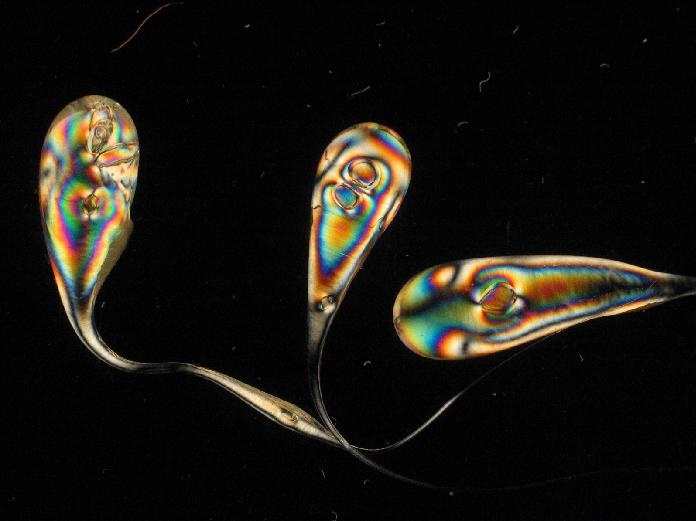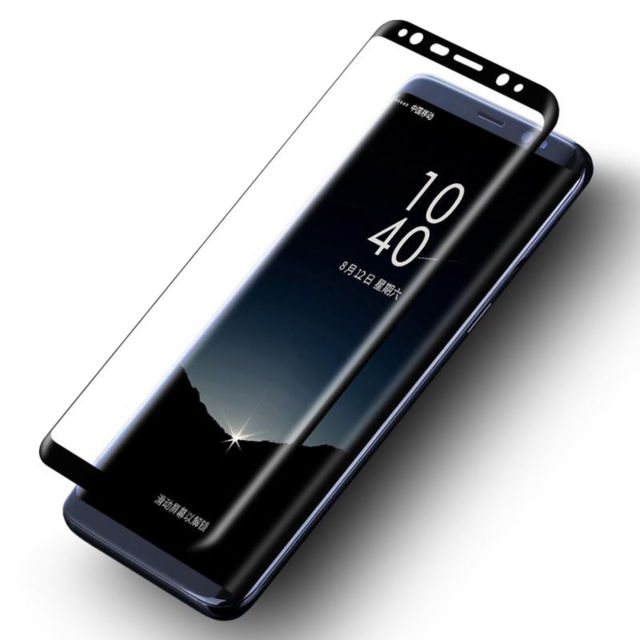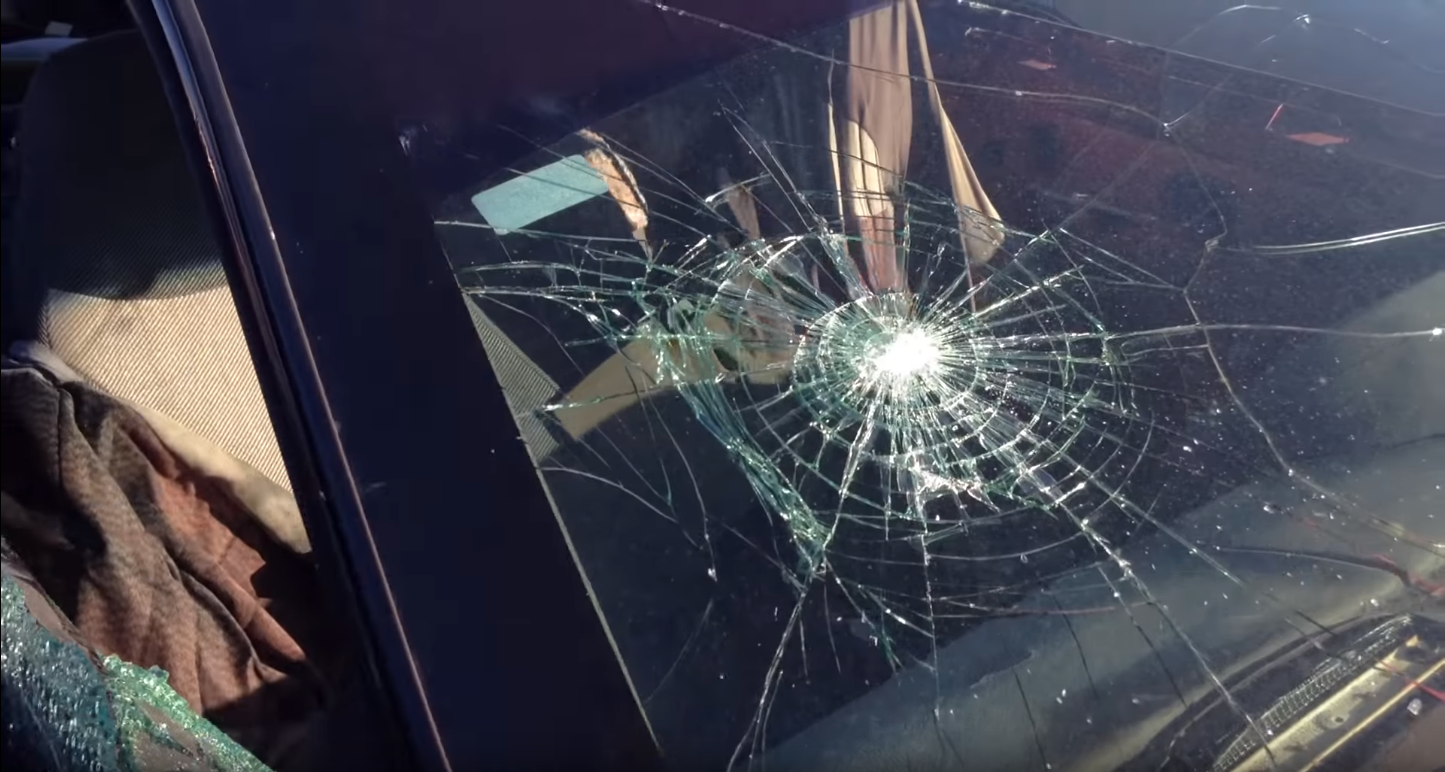
Hello, Habr!
We all heard words such as "tempered glass", "Gorilla Glass", "chemical processing of glass." Nevertheless, in most cases we don’t even think about how all these things are arranged, but in vain - this topic contains a lot of amazing facts and interesting logic, and physics in it once again shows its beautiful and bright side. And physics is most beautiful when its extremely simple laws greatly surprise us.
This article will not have any abstruse formulas or long logical chains (but links for the curious, of course, will certainly be). If you want to relax and enjoy the beauty of nature - this article is for you. I invite everyone to cat!
Batavian tears

A bit of history
Far 1660th year , England. The king sent five “little glass bubbles” to his Royal Society. The company reported with great speed that it was able to produce two more tiny similar products that behave exactly the same as those received. The find was immediately recorded in memoirs, and the manufacturing instructions began to be translated into foreign languages and rapidly spread throughout Europe.
Glass drops, subsequently referred to as "drops of Prince Rupert" in honor of the admiral and scientist Prince Rupert of Palatinate , who brought the drops from Germany to King Charles II, caused heated discussion among scientists of the time. Such famous personalities as Robert Hook, William Thomson (First Baron Kelvin - yes, the same one) and others, but a clear mathematical description of all the processes occurring in the drops first appeared in the writings of Arnold Alan Griffith in 1920 made their efforts.
Prince Rupert, of course, was far from the first to make this discovery. According to Petronius , something similar was known to glassmakers since the time of Tiberius : the creator of the product, according to Petronius, Tiberius sentenced to death, because he was afraid that the invention could be more valuable than all his treasures.
In the 17th century, before the name “drop of Prince Rupert” was established, the name “Batavian Tears” or “Holland Tears” (Batavia - the old name of Holland) was still widespread, because for the first time they began to be mass-produced there.
Essence
What so excited everyone who saw this glass phenomenon , and continues to surprise so far?
The process of making Prince Rupert's drop is extremely simple: you just need to take a bucket of cold water and drop it with molten glass. After the glass cools down, you get a product in the form of a droplet - it is called the Batavsky tear. It would seem that this whole procedure is extremely simple. However, the Batavian tears have a very interesting property.
They combine paradoxical, at first glance, qualities. The Batavian tear is both incredibly strong and incredibly fragile. The “head” of the resulting tadpole is surprisingly strong: it is impossible to break it with a hammer or other manual means, and under a hydraulic press it can withstand as much as 20 tons . But if you scratch the tail a little or shake it too much, the whole drop will explode into tiny pieces.

How it works?
As it is written here , during cooling in water, the outer layers immediately harden and form a kind of "shell" for the heated glass inside. During cooling, the inner glass shrinks strongly, eventually leading to a huge accumulation of mechanical stress inside the droplet.

Looking at the drop through the polarizer, you can "see" all this accumulated voltage:

As you probably already guessed, the explosion of the Batavsky tears is associated with the release of all this tension. The process is similar to a chain reaction: each small piece, having lost its holding base, is thrown out under high pressure.
Cars
Where does this phenomenon apply? In fact, every day you see glass made according to this principle. For example, in passenger cars, it first began to be used in the 1930s (yes, it took about 300 years to appear the field of application) in the form of tempered glass. And the invention began to be used in:
- Showers;
- Shelves of refrigerators;
- The composition of some types of bulletproof glass;
- Masked divers;
- And there are many more.
In passenger cars, it is important to choose the right type of glass for one or another part due to safety reasons.
Side and rear windows
Ordinary glass, as a rule, breaks into large, sharp pieces that can harm the driver in the event of an accident. Therefore, here you need a glass that will not only be strong, but also crumble into small, safe pieces, if it breaks.
For this, tempered glass is used. It is obtained due to rapid cooling from the sides during the production process. Here, everything works the same way as the Batavsky tears, and if you hit the window around the edge, it will shatter. And after that, you can still hear a quiet crunch for a while: this is the last tension released from the fragments.
Windshield
This glass has a special role. It should not only be very durable, but it should as much as possible prevent objects from entering the cabin even in the event of a breakdown. Bulletproof glass works on similar principles.
Here the tempered glass is no longer suitable. Instead, they use the so-called triplex , or, as it is called in the West, "laminated glass". Usually these are three layers glued together: the outer ones are made of ordinary (silicate) glass, and between them there is a polymer film.
Triplex is commonly used when we want to make glass extremely durable. It finds application in:
- Glass buildings;
- Windows of houses;
- Museums
- And etc.
If the outer layer breaks, it does not crumble into small pieces, as it would if it were from tempered glass. Instead, he and his supportive layers continue to protect passengers from dangerous and possibly quite large solid objects. Now you can see why the story of detective Hal Vukovich about how a man in a trance broke the windshield of a car is the most common bike.

Gorilla glass
And of course, we can not help but mention all of our favorite smartphones!

Gorilla Glass is a brand of chemically tempered glass . It is more expensive and more difficult to manufacture; however, this reinforcing method is common in the mobile industry. Why?
The fact is that the spectrum of requirements is added to the glass of a mobile device:
- The glass should be as thin as possible, and the strengthening methods described above require a certain thickness;
- Glass should refract light as weakly as possible;
- Glass can be of different shapes and have curvatures (for example, at the borders - hi, Infinity Display ).
Chemical processing copes with all this very well: it is able to strengthen even very thin glass, curved glass, and measurable changes in the refraction of color do not occur.
Of course, there are some drawbacks. Here are some of them:
- It can only be applied to glass containing alkali metal oxides (for example, silicate glass);
- Expensive.
In addition to mobile smartphones and other gadgets, chemical quenching, invented in 1962, has found application in several other household items:
- Windshields of cockpits in aircraft;
- Glass scanners;
- Portable hard drives.
Let's see how it works.
Principle of operation
The idea is to replace the alkali metal ions in the glass with larger ones, as shown in the picture, to make the glass more dense and, accordingly, more durable.

To do this, the glass is lowered for a certain period of time into a special electrically heated substance (for example, KNO 3 ). As a rule, the faster the ion exchange process takes place, the deeper large ions penetrate the glass and the cheaper it all costs us. Therefore, the choice of temperatures and substances is quite important.
After we have passed all these stages, small cracks are “fixed” in the glass and the density of the outer layers is increased, which makes the glass more resistant to scratches and impacts.
Conclusion
Hooray! Now you know something about some types of glass reinforcement and where each is used. As an exercise, can you tell right away which glass Gav and Dan are breaking in the next video? How does it come about? Where is it used? And what kind of mistake does Gav make when he sums up at the end of the video?
I'm sure you coped with ease! Good luck to everyone and thanks for watching the article!
PS
I will be glad to any reasonable criticism regarding the content and form of the article.

